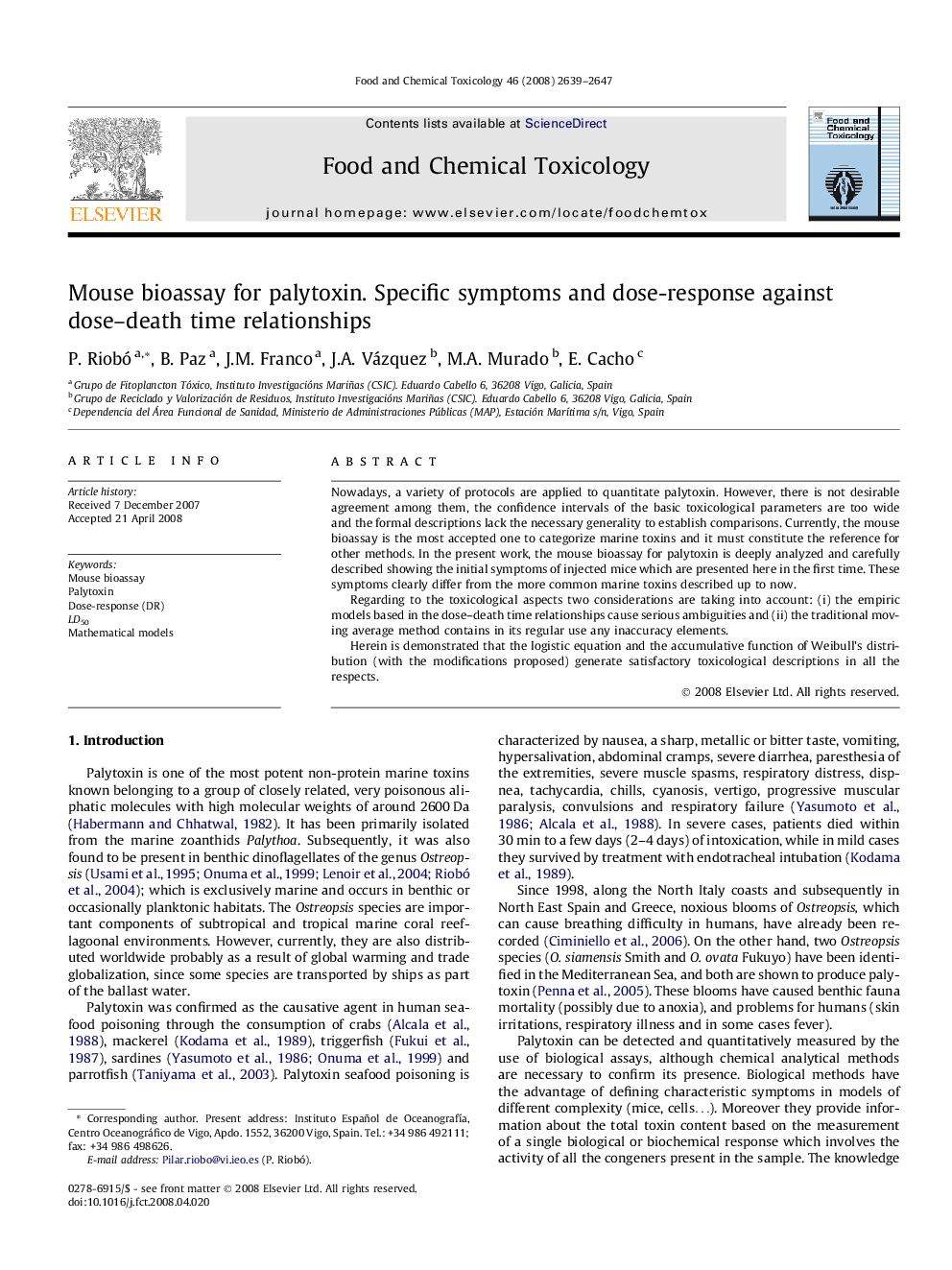| Article ID | Journal | Published Year | Pages | File Type |
|---|---|---|---|---|
| 2587147 | Food and Chemical Toxicology | 2008 | 9 Pages |
Nowadays, a variety of protocols are applied to quantitate palytoxin. However, there is not desirable agreement among them, the confidence intervals of the basic toxicological parameters are too wide and the formal descriptions lack the necessary generality to establish comparisons. Currently, the mouse bioassay is the most accepted one to categorize marine toxins and it must constitute the reference for other methods. In the present work, the mouse bioassay for palytoxin is deeply analyzed and carefully described showing the initial symptoms of injected mice which are presented here in the first time. These symptoms clearly differ from the more common marine toxins described up to now.Regarding to the toxicological aspects two considerations are taking into account: (i) the empiric models based in the dose–death time relationships cause serious ambiguities and (ii) the traditional moving average method contains in its regular use any inaccuracy elements.Herein is demonstrated that the logistic equation and the accumulative function of Weibull’s distribution (with the modifications proposed) generate satisfactory toxicological descriptions in all the respects.
